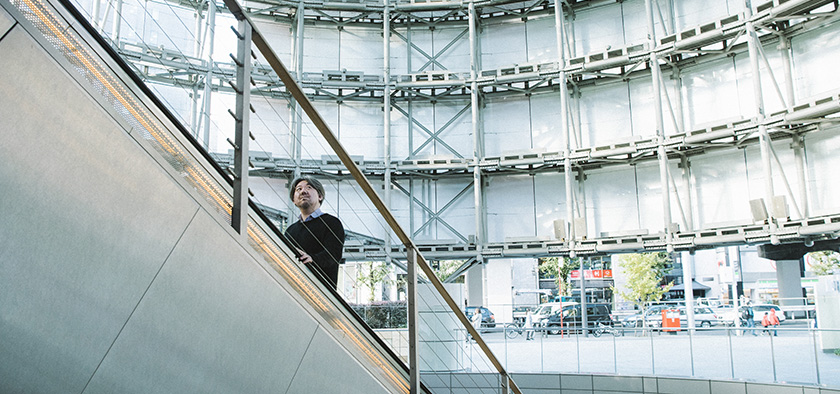
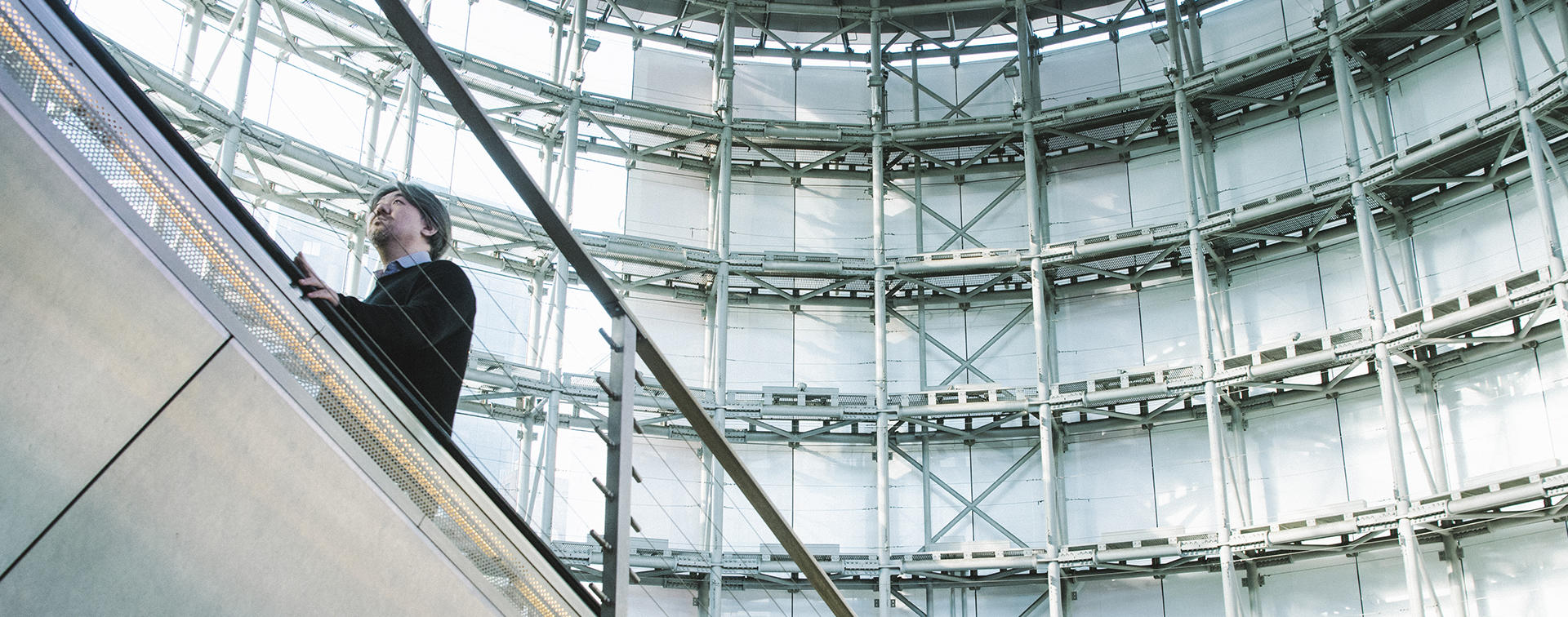

Having a global perspective and sending out information to the world
Showing the wonderful everyday things
Kaoru Sugano, creative director at advertising agency Dentsu Lab Tokyo, combines the latest technology with innovative ideas to create stunning images that seem to come from another world; his works range from the exciting "flag handover ceremony for Tokyo 2020" at the 2016 Rio Olympics' closing ceremony to the music video collaborations with singer Björk. We were interested to know the views of Sugano-san who is based in the advertising world, on the significance of communicating ideas and information. In this interview, he gave us precious advice on enhancing the communicating power of Roppongi.
Roppongi is where I encountered music and culture
I'm from Tokyo's Suginami cityward but I spent the six years of junior high school and senior high school at Azabu Gakuen which is in Moto-Azabu. Shibuya was within walking distance of the school, and I used to go there with my friends to have fun. Sometimes we would go to Daikanyama to buy clothes. Roppongi was the nearest area to the school, but it seemed like a place for adults. Near Roppongi Hills Metro Hat, where the photo session was held today, there used to be a record shop called Roppongi Wave. A long time afterward, I learned that many of the people who worked there eventually became music critics and DJs. In the record shop you would find written explanations on music which were so detailed that were like liner notes - you could feel the passion of the people making the recommendations. I didn't have the money to buy a lot of CDs, but being a student, I had plenty of time, so I would often go there and get information on all kinds of music. So for me, Roppongi is a place where I encountered music-centered culture; it's where I got to know about the music that exists in the world.
The first club I nervously visited was near Roppongi. It was a club called Space Lab Yellow in Nishi-Azabu. In those days there was no Internet, and I would get information at the record shops, asking the sales assistants when I wanted to find out more. It was by walking about that I would get to know about things and I would exchange information with my friends. One day, I heard rumors that a musician I'd learnt about at Roppongi Wave was going to come to Yellow - the excitement I felt then is one of the first, unforgettable experiences I have of Roppongi.
Space Lab YELLOW
A club that opened in 1991 in Nishi-Azabu and which had a large influence on Tokyo's dance music scene. Referred to simply as Yellow, the club had a main floor with a capacity for 400 people as well as a lounge and bar. To the chagrin of patrons, it closed in June 2008.
As an adult, my ties with Roppongi have continued mostly due to the work I do; for example, when the "Sound of Honda/ Ayrton Senna 1989" was awarded the Grand Prize of the Entertainment Division at the 2013 Japan Media Arts Festival, we were given the opportunity to hold an exhibition at the National Art Center, Tokyo, and do talk shows and workshops. We also exhibited at the "All You Need is Love" exhibition at Mori Art Musuem which was held to mark the museum's 10th anniversary.
Sound of Honda / Ayrton Senna 1989
A movie that replicated through sound and light, the Ayrton Senna race at the F1 Japanese Grand Prix in 1989, which was the world's fastest lap at that time. The engine sound was reproduced by analyzing the engine and accelerator movements, and by combining various sounds from actual recordings of MP4/5 cars. Numerous speakers and LED lights were installed on the 5,807-meter Suzuka Circuit; the sound was coupled with the motion data, bringing back to life the performance that Senna achieved 24 years before.
The realization of ideas if more important than their conception
I'm not an artist who shows works expressing the inner self. My job is to create adverts. There is always a project revolving around a client - someone who wants to send out a message and my role is to think of ways to smoothly get the message across. So if there is no given theme to work on and you were to ask me, "What do you want to do, Sugano-san?" there is actually nothing in particular that I myself strongly wish people to know about. What I do is to suggest the most effective methods for certain goals - my thinking is focused on clarifying what needs to be done to attain the goal. So if you were to ask me how to enhance Ropppongi's power in spreading information, I would ask what kind of place you want Roppongi as a whole to become - and if you are not clear about that, I would try to understand what your ideal might be. For me, advert communication is about thinking together with the client about what message should be sent for what purpose.
When I was younger, I was impressed by the work of the people older than myself; I was in awe with the way they came up with ideas. Now though, I feel that the ability to come up with ideas can be cultivated by practice and skill, as long as you are equipped with a strong will. It's only natural for creators to think of ideas; what is essentially more important is to turn the ideas into reality - to give them a place in the world. When someone makes something new, people might look at it and think, "I thought of something similar myself." But what's important is to be the first to make the idea a reality. You can only say you invented something when, with a high level of craftsmanship, you turn an idea into something that sees the light of day.
It's like that with technology. It's said that in the late 19th century, Bell, Gray and Edison invented the telephone at about the same time. When knowledge about a certain technology expands, you reach a point - if you are observant and constantly thinking about it - where you could turn an idea into reality. What is difficult is manifesting it into something of a high standard. When we are grown up, we come up with good ideas, but they don't easily become reality, do they? There is the matter of money and a lot of other obstacles. I think a creative director's job is to overcome those obstacles one by one - to keep it simple and resist the urge to overdo it, and to express, as much as possible, the initial idea in its purest form. I think that is what the job of a creative director is about.

A global perspective is possible wherever one lives
Fortunately, I am often invited to do lectures overseas, or to be a judge for advert design awards such as D&AD and Cannes Lion, or to work on projects abroad; in the world of advertising, the English-speaking audience is much larger, which of course means that the scale of business is much larger. The Japanese are a minority. New York and London are the admired places, and talented people from all over the world gather there. I am aware of that fact, and yet I choose to live in Tokyo. This city appeals to me, and I like being able to work together with talented and skilled people who live in Tokyo and in other parts of Japan.
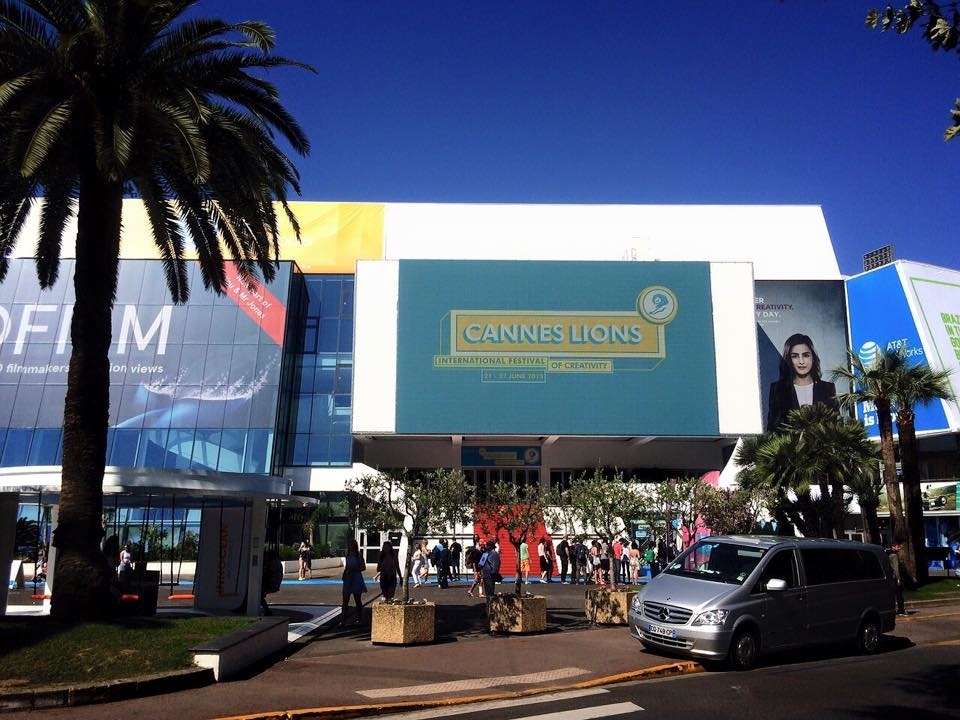
Cannes Lions
The world's largest advertising festival that is held in late June every year in Cannes, France. Its official name is Cannes Lions International Festival of Creativity. Sugano first submitted his work to the festival in 2012. In 2014, "Sound of Honda/ Ayrton Senna 1989" was awarded 15 prizes in 7 categories and won the most coveted Grand Prix in the Titanium category.
I don't think one's work would become global by moving to New York or London. In every city, there is plenty of local work. You always become a member of a local community wherever you are. The really important thing when doing global work is not where you choose to live, but to always have the stance of making things with a global perspective. Even when you are giving information to the Japanese, you should also think about making it acceptable for the whole world. You should always consider how the world will assess what you made. It's important to set these high bars for yourself, even if no one asks you to. I haven't given much thought to living in a certain place in order to become global-minded; I think I choose to live in Tokyo because it's a city which stimulates my sensibilities.
Though it's not substitute for living abroad, I do try as much as possible to go abroad when I am invited to talk or judge, because I want to expand my horizons. When you become a member of a jury, you spend about a week together with people from a dozen or so countries. We share the same profession but live in different places; everyone works globally. It's interesting to find out how the other jury members view Tokyo, and I also learn a lot from the serious discussions we hold about the meaning of our work. I get the impression though, that Japan is viewed as being considerably different in many ways. (laughs)
The works I judge are usually in the digital design category; apparently, there is a distinctive craftsmanship in Japanese adverts and designs. This is something that has been pointed out long ago, but the Japanese works are very through. Rather than presenting a big idea, Japanese creators are meticulous about details and it shows in their works - apparently people can tell when they see something made by a Japanese. (laughs) "It's very Japanese" is an expression that is often used; while the words are meant as praise, they also seem to imply going a little too far.
Showing the image of the future to a targeted audience
You are asking me how to enhance the communicating power of an area? Well, you could introduce to the world all the nice things that exist in Japan, but that doesn't mean people will immediately understand everything; I don't think it's that simple. There's a reason for the fact that the message about the attractiveness of Japan isn't getting across. And that reason is the lack of shared context - there's no common premise. In Japan, a lot of high-context designs are made, but if those messages were modified for people abroad, there might be three types of responses. One is that people will accept the context as it is. Another is that people will respond favorably to an element - like exoticism for example - that has nothing to do with the original context. The third is that people would not understand the message at all.
Since the old days, people in the West have loved exoticism. They seem to have in mind a version of Japan that the Japanese themselves haven't seen; a lot of ordinary things are transformed into the extraordinary - as if Japan is a mysterious land of gold. (laughs) The Japanese don't recall the country ever being a land of gold, but I think people outside of Japan have a yearning for a foreign country - there seems to be an admiration for the exoticism of a culture that exists far, far away, which is not of this world. I think the sentiment is probably strengthened by the fact that Japan is in the Far East and is geographically farthest from the West.
With this in mind, when sending information abroad, it's important to decide on what image of the future we want to show, and who our target audience is. We shouldn't try to forcefully change anything; we should think about how we can present the marvelous things about Japan in the context of the recipients, in a way that can be understood and accepted. That would be the essential key to communication.

The different impressions of Roppongi held by different generations
I think the impressions that people have of Roppongi differ depending on their generation and when they visited. People in professions like mine often come to this area because of their involvement with design and art, but there must also be people who have never been to the art museums. For some middle-aged men, Roppongi is the place for "kyabakura" (hostess clubs) where they entertain clients. Since Roppongi has many faces, the views that people have of it probably differs greatly. I think it's an interesting area - it's difficult to describe the place in a word. If someone were to ask which art galleries in New York are interesting these days, the response would probably be to talk about the art galleries in Chelsea and Bushwick and their neighborhoods, but to the question, "What kind of a place is Roppongi?" I think people would come up with completely different replies.
I used to play jazz when I was a student. As you know, New York is a city of jazz. Of course, there are jazz musicians all over the world, and there are many who go outside of New York, but for many, New York is a mecca, where they go at least once for a certain period in their careers. There are such meccas in the world of contemporary dance, classic music and so on. Young people seeking to study some form of art have a place they want to go to, but we cannot say with confidence that Tokyo is among those places.
Tokyo is not a mecca for aspiring creators
In 2016, I worked with Björk. At first glance, Björk doesn't look like a person from Iceland - you can't tell where she's from. She said that since childhood, she's often been told that she looks Japanese, and she feels an affinity to the Japanese. Björk has done a lot of collaborative projects with Japanese creators such as [Nobuyoshi] Araki-san, Rei Kawakubo-san, and Junya Wanatabe-san. Björk said that if she hadn't been in a band - I think she was referring to "The Sugarcubes" - she would have come to Tokyo to study animation. The Japanese animation culture is certainly amazing, but unlike New York which is a mecca in the jazz world, a system has not been built here where people from all over the world can become a central part of the animation culture. It's such a pity.

Björk
A world-famous singer from Iceland. In 2016, Björk made the music video "Mouth Mantra" collaborating with Sugano, who heads DentsuLab Tokyo. In the same year, an experimental virtual reality exhibition called "Björk Digital Exhibition: VR in Music -18 Days Experiment" was held at Miraikan. A movie called "Making of Björk Digital" was also made from the 360-degree VR live streaming of Björk's performance.
I was involved in planning the "Tokyo 2020 flag handover ceremony" at the 2016 Rio Olympics' closing ceremony. The ceremony featured animation and game characters that are popular worldwide. I think people overseas watching the ceremony must have looked at some of the characters and thought, "I didn't know this was Japanese". Of course, it was nothing new for the Japanese. You cannot be blamed for not knowing that the Mario character was born in Japan, since he looks Italian in every way. (laughs) I think that ceremony reinforced the view that games and animation are very much part of the Japanese culture. But I don't think it created a trend for people to come to Tokyo to study or to work in a Japanese company related to those genres. Obviously, for a person who doesn't speak Japanese, it is not easy to work at a game or animation company in Japan. I thought about these things when I was talking to Björk. 2016 was a year when I did a lot of thinking about Tokyo to an extent I'd never done before.
Thinking about a commercial facility's role in a community
Last year, I was involved in a project for Mori Building - we made a commercial for the opening of Ginza Six. While it was an advert to inform people that Ginza Six had been built, we didn't show a lot of the building itself. The main theme was about how the birth of Ginza Six will bring about a new culture, a new luxury to Ginza. We put the town of Ginza at the forefront. The commercial showed the colorful landmarks and well-known scenery of Ginza such as the elevator at Hakuhinkan Toy Park which is the only hydraulic elevator in Tokyo, the alleyways of the traditional drinking districts, and the rooftop of Wako. We had Tortoise Matsumoto-san and Ringo Shiina-san tell the message through music - conveying the future role of the town of Ginza.
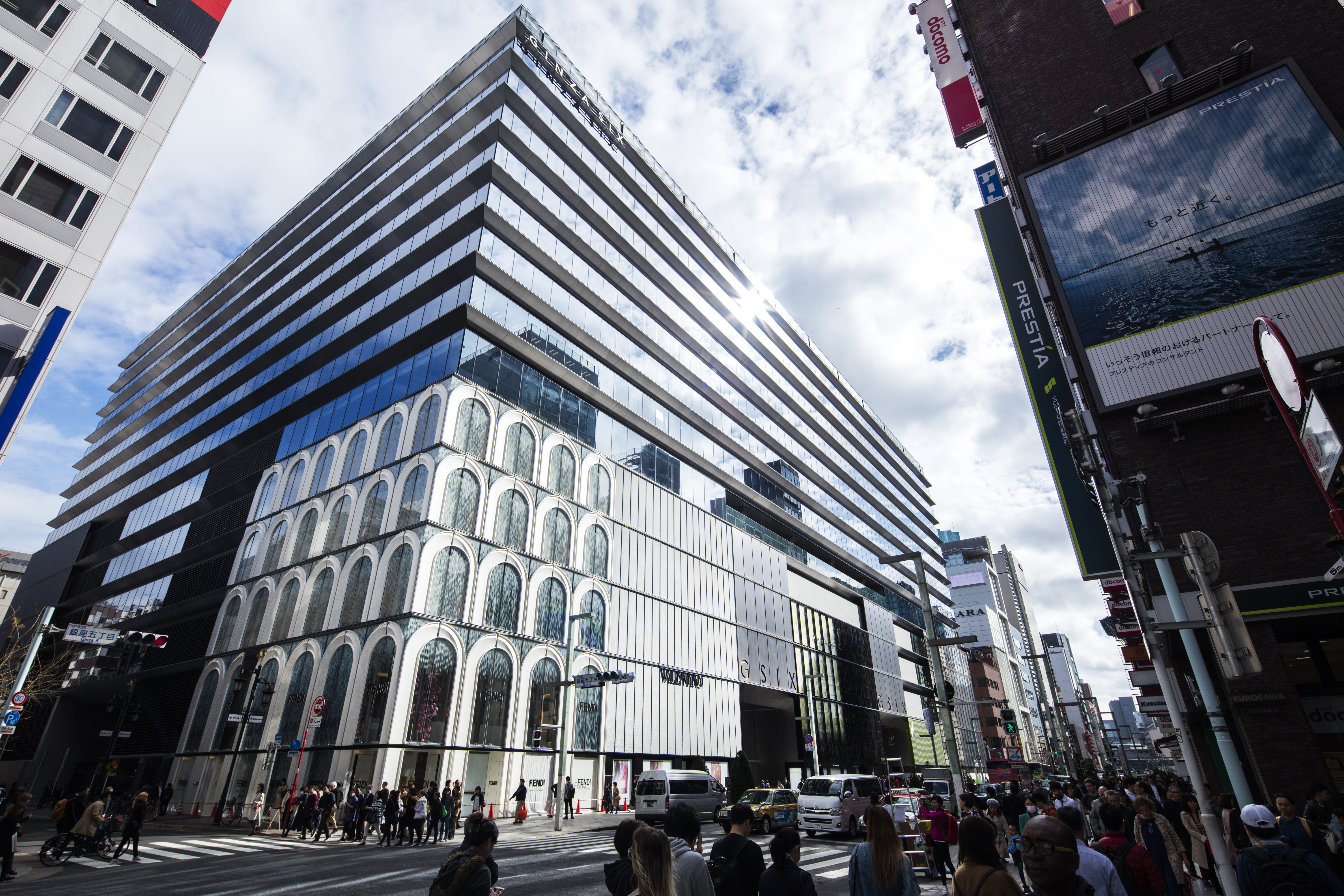
GINZA SIX
Ginza's largest commercial complex that opened April 20, 2017 on 6-chome Chuo-dori. In addition to shops and restaurants, there are offices, a cultural facility - the Kanze Noh-gakudo (Noh Theater) - a tourist service center "Terminal Ginza", and a rooftop garden.
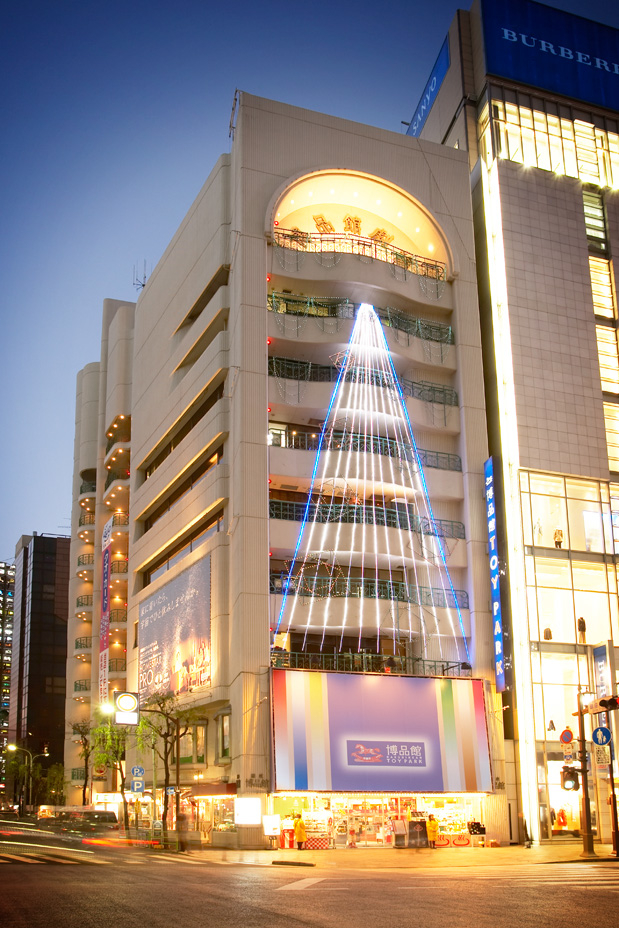
Hakuhinkan Toy Park Ginza Shop
A toy shop that opened in 1982. The shop is in a 10-storey building which was built in 1978 has a hydraulic elevator that moves between the first and fourth floors. The elevator is intended to project a cool image and evoke something out of a sci-fi movie; it was made in line with Hakuhinkan's goal of becoming Japan's number one toy shop. The elevator was shown in the commercial that Sugano made for Ginza Six.
There's no point in simply asserting, "This is what our building looks like," which is what many commercial facilities tend to do. A message must be given on the premise that the building is a part of the town - a part of the community. You have to inform people about the role of the commercial facility and how it will contribute to the town. Clarifying that in a message is what makes it resonate with people. I think that is something to keep in mind when informing people about Roppongi.
Like Roppongi, Ginza means different things to people depending on their generation. For the generation above us, Ginza is a town where you dress up to go, but for the young people of today, it might not be a place they want to visit often. But you cannot ignore the history of a town - what a town used to be and what it is now are all accumulated on top of each other like layers of soil.
For me, Roppongi, is a place of music. I personally feel that the relationship between towns and music is quite important. There's the music that you hear when you are in the streets. For instance, in Rio de Janeiro, you would hear samba music and of course, bossa nova, although for the locals, "The Girl from Ipanema" sounds like old music just as enka sounds old to us. I think the music that is rooted in an area defines a culture. Music is also like a layer of soil: there is music that people in every generation have listened to and the connection is continuous, never broken. If I were to make an advert for Roppongi, I would probably start by thinking about what kind of music will be heard here in the future.
Showing the familiar, everyday Tokyo that everybody knows
You are asking me how we should inform the world about Tokyo ahead of the Olympics in 2020. When planning the "Tokyo 2020 flag handover ceremony" at the 2016 Rio Olympics' closing ceremony, the creative team - which included Hiroshi Sasaki-san, Ringo Shiina-san, MIKIKO-san and myself - debated endlessly for hours. Then one day, Shiina-san said, "Let's go ahead with normal operations." She said that what we normally do is wonderful and we should just go on as we usually do. She certainly had a point; when you brace yourself for a special event and try too hard to do something that nobody has done before, and nobody has ever seen, you end up with something very unnatural.
Shiina-san's words made us realize that we need not strain ourselves trying to do something extraordinary for a one-day event; we realized it was important to show Tokyo as it is in everyday life. If people around the world saw Tokyo as it usually is and thought it was nice, we could be proud of it. On the other hand, if people praised us for showing an unfamiliar image of Tokyo, the Japanese would think, "Is that really Tokyo?" So for the "Tokyo 2020 flag handover ceremony" at the 2016 Rio Olympics, we tried to show in a detailed and easy-to-understand way, the many aspects of Tokyo that the Japanese are familiar with.
So instead of trying to change Tokyo to an ideal image ahead of the 2020 Olympics, I think we should try to inform the world about the wonderful aspects of everyday Tokyo. After all, whatever you eat in Tokyo tastes great and we already have good hospitality. The Japanese take for granted many things - such as the way the trains and buses arrive on time - but these are things we can be proud of. I think it's important that people in the rest of the world experience these things. I think the biggest pleasure that can be had is being complimented for the careful work you do every day.
Editor's thoughts
When we asked Sugano-san about sending out information, he paused thoughtfully and said it was a difficult subject, but nonetheless gave us many insightful ideas into the possibilities that lie in Tokyo and Roppongi. It was an interview that made us rethink how we at the editorial team of Roppongi Future Talks can send out information on Roppongi. Sugano-san told us that when he was a college student, he had hoped to become a jazz musician. The artistic sensibilities Sugano-san has as a musician is wonderfully balanced by the logical mind that he uses for work related to digital technology. It was a most stimulating talk. (text_ikuko hyodo)



















